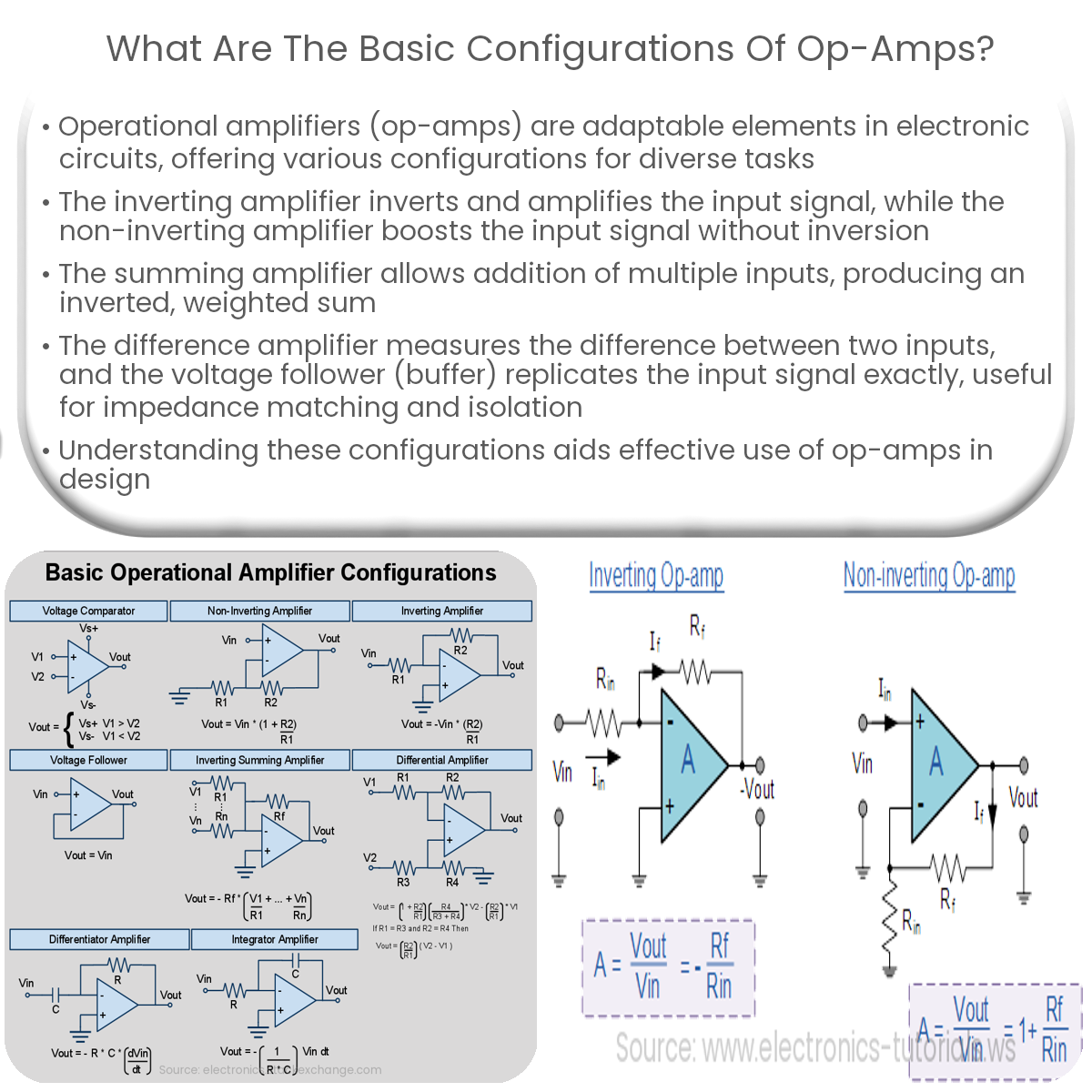Basic op-amp configurations include inverting, non-inverting, summing, difference amplifiers, and voltage followers, each serving different purposes.
Basic Configurations of Op-Amps
Operational amplifiers (op-amps) are versatile components in electronic circuits, offering a wide range of applications. They are commonly used in different configurations to perform various tasks. This article will discuss the basic configurations of op-amps, including inverting, non-inverting, summing, difference, and voltage follower.
Inverting Amplifier
An inverting amplifier is a basic op-amp configuration that inverts the input signal and provides a gain. The input signal is connected to the inverting (-) input, while the non-inverting (+) input is grounded. The output signal will be an amplified, inverted version of the input signal.
Non-Inverting Amplifier
A non-inverting amplifier is another basic configuration where the input signal is connected to the non-inverting (+) input, and the inverting (-) input is connected to a feedback resistor. The output signal is an amplified version of the input signal without inversion.
Summing Amplifier
A summing amplifier is a configuration that allows for the addition of multiple input signals. It uses an inverting amplifier configuration, with each input signal connected through individual resistors. The output signal is the inverted, weighted sum of the input signals.
Difference Amplifier
The difference amplifier is a configuration that measures the difference between two input signals. This configuration connects both input signals to the op-amp, with one connected to the inverting (-) input and the other connected to the non-inverting (+) input. The output signal represents the amplified difference between the two inputs.
Voltage Follower (Buffer)
A voltage follower, or buffer, is a configuration that provides a high input impedance and low output impedance. The input signal is connected directly to the non-inverting (+) input, and the output is connected back to the inverting (-) input. The output signal is an exact replica of the input signal, making it useful for impedance matching and isolation between circuits.
In summary, op-amps are highly adaptable components in electronic circuits, offering a wide range of configurations to suit various applications. Understanding these basic configurations will enable engineers and hobbyists to effectively use op-amps in their designs.


